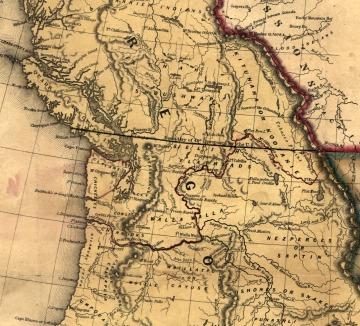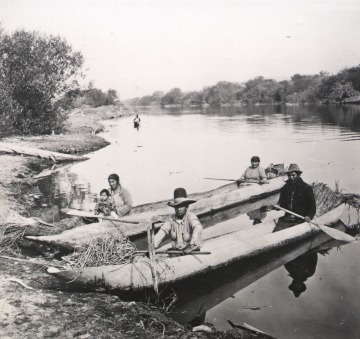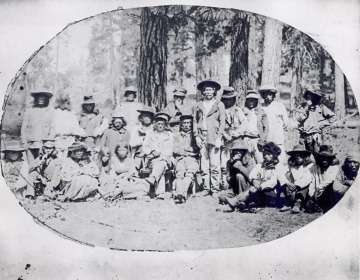1846: U.S and Britain set 49th Parallel as U.S.–Canada border
The U.S. negotiates with Britain to end a Canadian border dispute. Tribes are not consulted as the 49th Parallel becomes the boundary. Many Native people on either side of the line wake up in a different country, living under different laws than those they knew the night before. Whole tribes are displaced. Stories abound of settlers’ staking claims to Native-owned land and tearing down the houses of tribal families to appropriate building materials for their own homes. Families from many tribes find themselves homeless.
- Theme
- Land and Water, Native Rights
- Region
- Great Plains, Northeast, Northwest Coast, Plateau
Map showing location of tribes near the 49th parallel, 1846.
Courtesy Library of Congress
Klamath Indians traditionally lived in villages and seasonal camps in southern Oregon. Canoes were very important in Klamath culture, used for fishing, transportation, and gathering wokas (the seeds of pond lilies), roots, berries, and tule reeds.
Courtesy Oregon Historical Society
Klamath and Modoc Indians, 1860. The original territory of the Klamath and Modoc once encompassed the entire Klamath Basin, on today’s California-Oregon border.
Courtesy Oregon Historical Society


